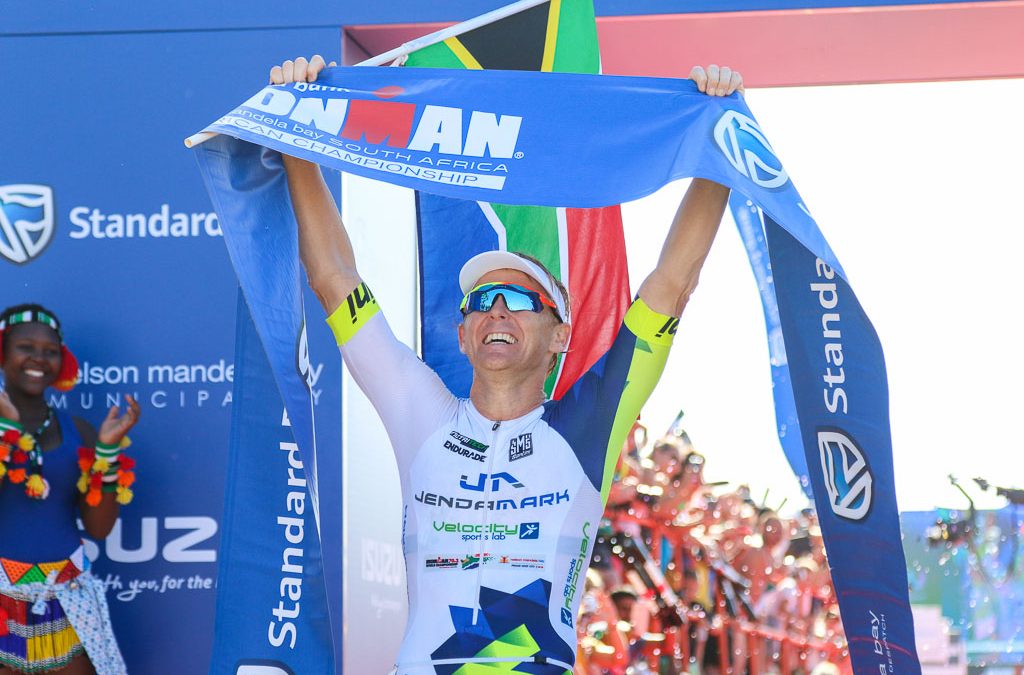
by Good News Lab | Dec 7, 2018 | Jendamark News
Jendamark-sponsored Ironman African champion Kyle Buckingham shares the highs and lows of being a professional triathlete and what makes him take on these super-human feats of endurance.
Q:You and Jendamark share the same home town of Port Elizabeth. What makes the city such a great training ground for you?
A: There is a lot of variety on my bike rides; I can practise on the Ironman Africa race course or head outside the city to tackle some hills. There is also great running where I live in Sardinia Bay. Plus, there’s a handful of quality pools to choose from for my swim and, of course, the Indian Ocean.
Q: What drives you to push the limits of your physical endurance in not one but three disciplines?
A: I love the challenge. I didn’t get the opportunity to try out any other sport beside Ironman when I was younger. I came across it by accident and found I was pretty good at it after finishing my first race.
Q: What has Jendamark’s sponsorship enabled you to do in your career?
A: My sponsorship with Jendamark has allowed me to train full time as a professional triathlete and race not only in South Africa but abroad too.
Q: What does your average training day look like?
A: On a typical day, I will train for at least six to eight hours on all three disciplines. I start with my bike ride – anywhere between two and seven hours. Then I head to the pool at lunchtime and swim four to five kilometres. After lunch I will have an afternoon sleep to recover before finishing off my day with a 45 to 90-minute run in the evening.
Q: How do you fuel your training? What does your daily diet look like?
A: I have pretty normal meals, consisting mainly of good proteins, high fats and lower carbs. When I train, I use energy drinks to help with electrolyte replacement and calories. I burn between 3 000 and 6 000 calories per day. I also take a recovery shake to add a larger number of calories into my diet than food can.
Q: How many pairs of running shoes do you wear out in a year?
A: I go through roughly five pairs of running shoes for training and I use a brand-new pair of racing shoes for every race. So that’s about another four or five pairs of racers.
Q: When you’re struggling on the run/swim/cycle, how do you motivate yourself? What do you think about during those long hours?
A: I think about winning my next event – it is always on my mind. When racing, I think about those long hard days in training that I do. I also think to myself that, when my race career is over, I want to look back and say that I gave my best effort – and not that I should have trained harder!
Q: Was winning the Ironman Africa Championship in your hometown the high point of your career so far?
A: Absolutely, YES!
Q: What’s your favourite memory from the day?
A: My favourite memory is running past my family on Marine Drive. They were all screaming for me and telling me I look amazing, and I just kept thinking, “I feel incredible. I feel like I am walking on water.”
Q: What are some other career highlights?
A: I will never forget the feeling of winning my first-ever Ironman at Ironman Lake Placid in 2014 in my first year as a pro. Another highlight was taking the overall course record at Ironman World Championships in Kona as an age-grouper in 2013 – and still holding that record today.
Q: What has been one of your serious lowlights? And how did you move past it?
A: In October 2017, I had a very upsetting race at the Ironman World Championships in Hawaii. I was in the absolute best shape and form of my life. Predictions and numbers were showing that I should be in a great position to finish top 10 overall. Then my race didn’t go as planned. I had a mechanical on the bike and was the last male pro to finish that leg. Looking back, I might have also picked up a virus that I didn’t know I had. On the morning of the race I could not stop sweating, which, looking back, should have been a red flag for me. The night after the race I was extremely ill and almost couldn’t catch my return flight home. I was sick for an entire month and slept day and night for the first five days. To get over the disappointment, I had to remind myself why I chose this sport and of the love I have for it. I also had to remind myself that I have a lot of people who support me and surround me with so much positivity. This encouraged me to get my fight back and start my training again.
Q: What are your plans and major goals for 2019?
A: My number one goal is to defend my title at Ironman African Champs in April and also to improve my position at the Ironman World Champs in Hawaii.
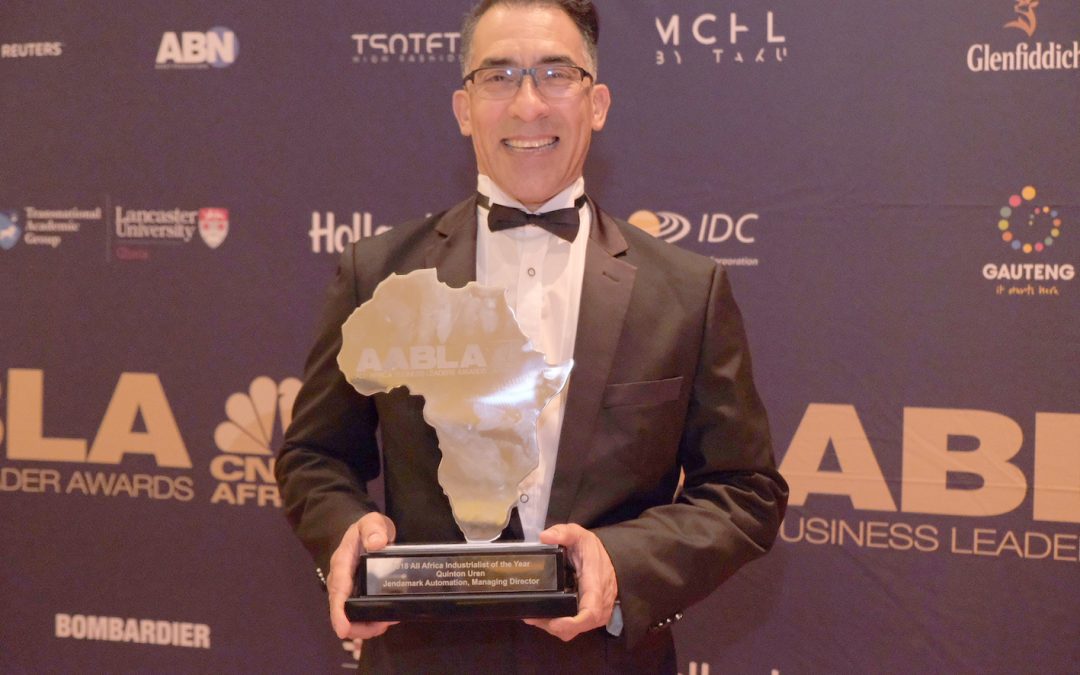
by Good News Lab | Dec 5, 2018 | Jendamark News
Jendamark Automation managing director Quinton Uren was named Africa’s Industrialist of the Year at the grand finale of the All Africa Business Leaders Awards, hosted by CNBC Africa at the Sandton Convention Centre in Johannesburg on November 29.
Uren, whose Port Elizabeth-based automation company exports manufacturing assembly solutions to 18 countries worldwide, beat out business leaders from Southern, West and East Africa for the overall title at the eighth annual continental awards.
These included fellow South African finalists Nampak CEO Andre de Ruyter, Likoebe Innovation Consultants founder Nneile Nkholise, and Nana Sebelo, CEO of Thata uBeke Manufacturing.
Speaking after the ceremony, Uren said the award was a “massive recognition for what Jendamark as a South African company, has achieved in the export market”.
Since co-founding the small automotive engineering firm in 1992, Uren and his fellow directors have grown the company into a global automation leader with local offices in PE, East London and Pretoria, and an international presence in Pune in India, Penzing in Germany, and Detroit in the USA. Today, exports account for more than 90% of the group’s business.
“The dedication and hard work of our home-grown talented team creates success. We operate in a very competitive manufacturing sector, and we succeed globally,” added Uren.
He attributed this success to balancing sound engineering solutions, driven by the latest Industry 4.0 technologies, with good financial direction.
While the economic outlook remained “tough”, Uren said having a global market strategy is continuing to prove to be best.
“We need to believe in ourselves and our local talent and apply ourselves to the available global markets.”
He said investing in Industry 4.0 was the competitive edge that would help attract investment and transform South African businesses and the continent, enabling on-the-job upskilling and job creation through skills development using virtual reality and augmented reality technology, among other high-tech tools.
“Industry 4.0 and how it pertains to the South African environment is the next big thing for us. It’s not about automation but about developing software technologies that can help our various industries and country become more efficient, effective, and transformed. Together, we can change the landscape, but we have to move quickly or that landscape will become barren.”
On a personal level, Uren, 53, said his award showed that anyone could make it.
“As someone who was classified as ‘coloured’, I come from an underprivileged background. There were no silver spoons, just having the correct intent, hard work and taking advantage of the opportunities I got.
“Today, there are fewer barriers than before and with the technologies that are available to most, young people have amazing tools to succeed. I have hope and proof that it’s possible.”
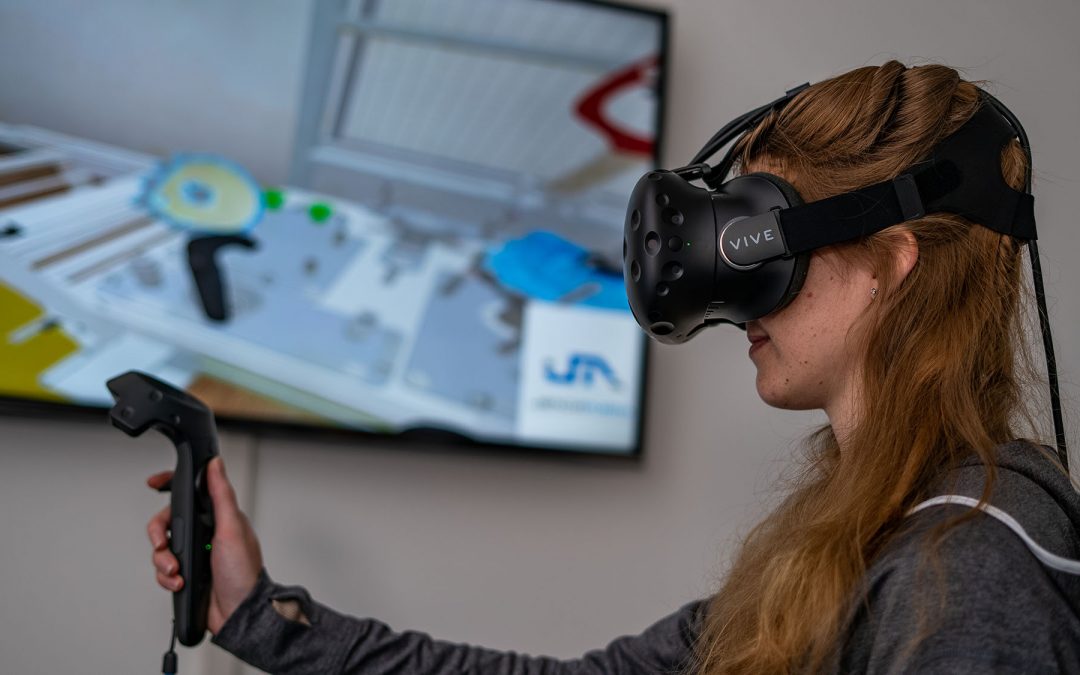
by Good News Lab | Nov 14, 2018 | Industry 4.0, Jendamark Junction
Jendamark’s virtual reality room allows designers and customers to explore the possibilities of a new production line in three-dimensional reality via an interactive, computergenerated experience.
The introduction of virtual reality (VR) has had tangible, real world benefits for Jendamark customers by enhancing the design review process.
First, the design team makes the complete production line in VR and a member dons the glasses for a walkthrough of the line. This simple step often highlights potential flaws that would not be apparent during a normal design review.
“It’s about seeing the design with fresh eyes,” says Yanesh Naidoo.
“For example, from a maintenance perspective, can the motor be easily replaced or is it stuck underneath in an unreachable back corner? And, as the operator, can one easily reach all the components, and does it really take the time predicted?”
Naidoo says VR is ideal for ironing out any kinks before the design is handed over to manufacturing and for clients to get a better understanding of its workings before sign-off.
“While the line is in production, VR could also be used to train teams of operators on the virtual version, so that they are ready to hit the ground running when commissioning is complete.”
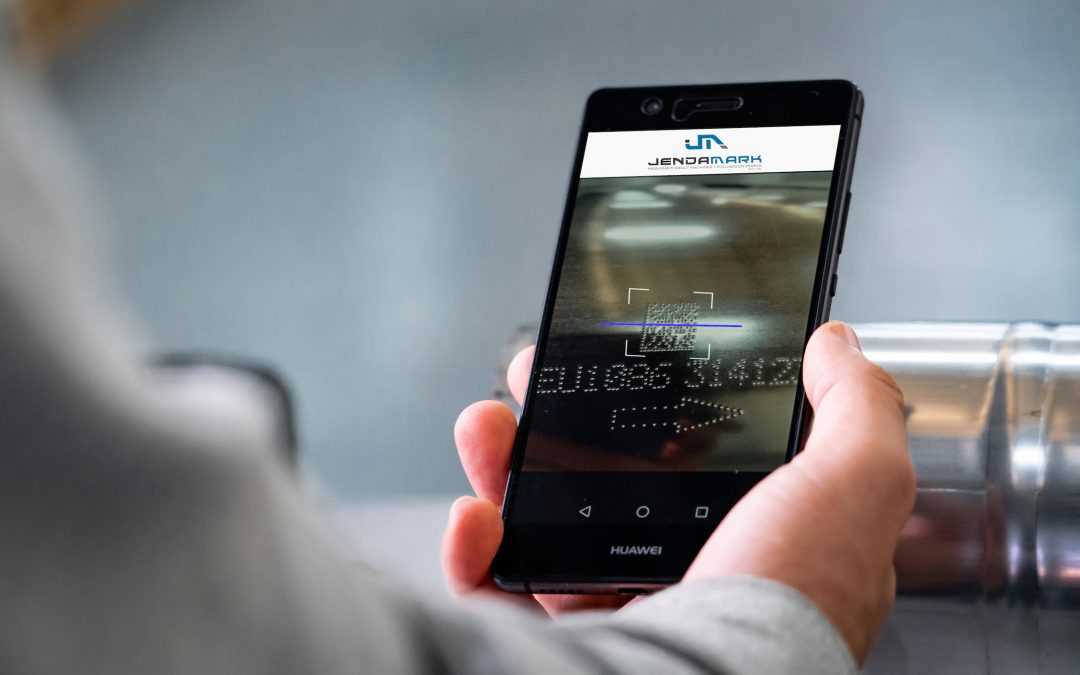
by Good News Lab | Nov 13, 2018 | Industry 4.0, Jendamark Junction
The Internet of Things (IoT) describes a network of machines, devices and other items that have built-in connectivity, electronics, software or sensors that allow them to share data and improve efficiency for humans interacting with them.
While the idea of a “smart home” or “smart business” may seem far in the future, current estimates suggest that there could be around 30 billion connected devices worldwide by 2020.
For Jendamark, the first application of IoT principles will soon be demonstrated with the addition of a documentation app* to its Odin software platform.
According to Yanesh Naidoo, it is standard practice for the company to deliver all the printed manuals and necessary documentation for a new machine or line as part of the handover process to a customer. Unfortunately, those documents are often misplaced over the years and remain unread until something goes wrong, he says.
“Our solution is to place a 2D matrix or QR code on the main sub-assembly of every machine we make. Then, instead of trying to find the manual, the maintenance technician simply scans the code using the app, which will take him to a link with the correct documentation for that particular sub-assembly.”
Taking this one step further, the IoT could be used to collect data such as the part numbers on a customer’s machine as well as the replacement parts available in his or her storeroom. This information would be available at a glance via the app, thus reducing machine downtime while fixing the problem.
* Currently in development. Available soon for Android devices from the Google Play store.
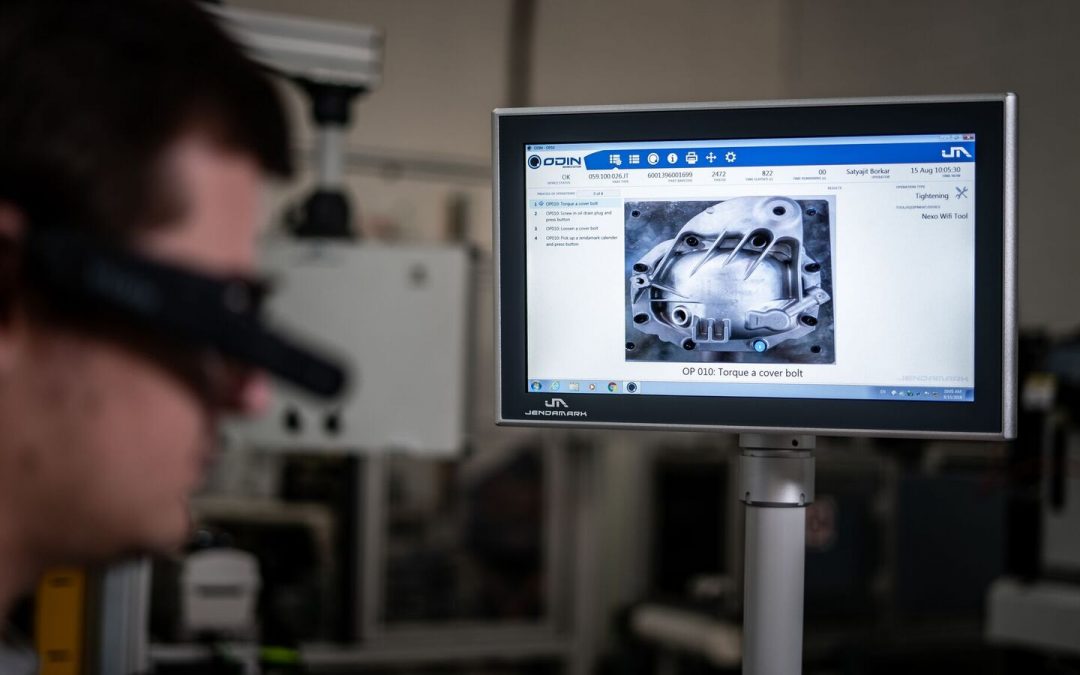
by Good News Lab | Nov 12, 2018 | Industry 4.0, Jendamark Junction
Augmented reality (AR), as the name suggests, uses technology to augment or add to a user’s experience by superimposing computer-generated images, text and sounds over a real-world environment.
AR creates an immersive and interactive experience for the user, which makes it particularly suitable for assisting operators and maintenance teams on production lines.
Jendamark currently uses AR hardware in the form of Vuzix smart glasses as a bolt-on to its WorkStation app to improve operator efficiency. Instead of consulting a screen or trying to remember each assembly process required, the operator sees the step-by-step process as a visual overlay on the real life workstation through the lens of the glasses.
AR also has a role in quality control by highlighting those parts that need to be visually inspected by the operator once assembled. Once everything is in order, the operator can capture the image, which may be logged as an element in the product traceability chain.
Aside from operator guidance, the glasses also help maintenance workers to access remote support more effectively. Once logged on to the software, the support provider – who may even be on the other side of the world – can see exactly what the maintenance worker sees.
This enables him to guide the on-site worker verbally through the repair process via Skype and by “drawing” helpful sketches, arrows and circles, which are superimposed on the maintenance person’s view of the problem area.
Jendamark’s aim is to develop the AR software that supports all of these functions and plugs seamlessly into its Odin software platform.




